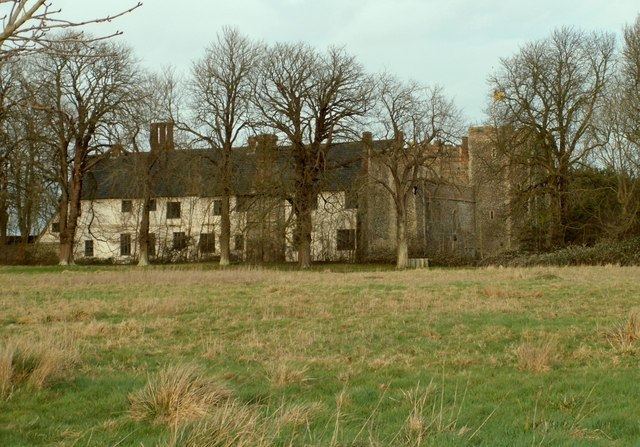Type Manor House Condition Private house | Owner Privately owned Materials Stone | |
 | ||
Wingfield castle reconstruction
Wingfield Castle, Wingfield, Suffolk, England was the ancestral home of the Wingfield family and their heirs, the De La Poles, Earls and Dukes of Suffolk, but is now a private house.
Contents
Ps wingfield castle hartlepool
History
In 1384 records show that Michael de la Pole applied for royal permit, to castellate his manor house. The need for the old feudal castle had already ceased to exist by this time and Kings were not pleased to see such strongholds built, so Wingfield Castle is a cross between a feudal fortress and the ordinary moated manor house.
Wingfield Castle passed into the hands of the Catlin family from Norwich. In 1702, Sir Nevill Catlin died there and his widow Mary carried the manor to her second husband Sir Charles Turner, 1st Baronet, of Warham. Lord Berners sold the Castle in 1886 to the Adair family. Lady Darrell, a descendant of Lord Berners, sold the castle in 1981 to a Mr. Wingrove. Two years later it was sold to a Mr. Gerald Fairhurst, who spent time in refurbishing it prior to its sale to a London businessman in 1987; and in 1989 it was again sold, this time to a barrister with the surname Gunter. The old Manor House and part of the fortifications were dismantled in 1510 and the present domestic quarters were constructed in about 1540 in the south west corner of the remaining fortifications. At that time the existing Tudor brick merlons on top of the south curtain wall were added.
The south facing battlement wall rises to a height of 42 feet (13 m) above the moat, and is 45 – 50 inches thick. The entrance gateway is approached over a bridge, which still bears the grooves of the former gate, drawbridge and portcullis. The walls are built of flint cobbles with stone for the coigns and windows. The plan of the site is quadrilateral, almost square, the west side being a little longer than the east, an enclosure of about an acre and a half. Besides the almost perfect front, the foundations of the north and east walls and two more towers are traceable. A brick bridge now leads up to the noble gatehouse where the fine depressed pointed archway, deeply recessed and moulded, still shows the portcullis groove and the old oak gates. On either side of the archway are sculptured stone panels depicting the coat of arms of de Wingfield and de la Pole.
The two main towers rise to a height of 60 feet (18 m) and the octagonal corner towers rise to 50 feet (15 m). The whole castle wall was apparently intact at the beginning of the 20th century, but the north and east walls had been demolished by 1945. A drawbridge still spans the eastern side of the moat. It has been extensively reconstructed, but retains some of the original timbers.
The castle was the inspiration for Godsend Castle, the home of the Mortmain family in the 1949 novel I Capture The Castle by Dodie Smith.
